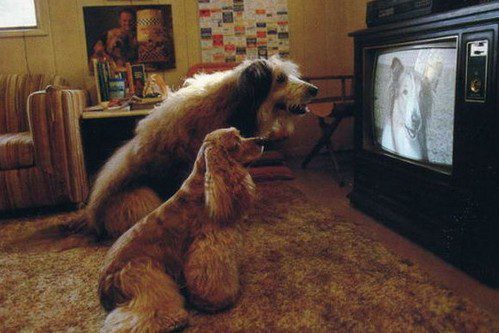When did I realize that I had a ‘dog show’ addiction?
My first inkling, was when I kept searching through the cable channels and ‘available shows to watch’ section of my service provider for the Westminster Dog Show or the Beverly Hills Dog Show.
Mind you this was after I’d watched both shows and knew the results.
I like dogs.
I own a dog.
I belong to the Poodle group on FB and the Poodle Rescue group too.
That is fairly normal, right?
However, when your husband walks through the living room (this is the man who wouldn’t notice if I was wearing mismatched shoes and sporting a tiara) and says, “You and Chanel are watching the dog show again?” It gives one pause. So, I’m back to viewing the History Channel and PBS--cold turkey, so to speak.
This morning I had my hairdressing appointment. (Hi, Dani).
 |
| Pumi |
Oh dear, I’ve really done it now—I’m converting (or corrupting) my friend into becoming a dog show addict, too.
We couldn’t stop!
Dani Googled “Pumi” (my favorite new breed). The Pumi is a medium-small breed of sheep dog from Hungary. They have a whimsical expression, with a tail that forms a circle over the back. We scrolled though the pictures (me squinting because I've removed my glasses) until we located the six-toed “Norwegian Lundehund," a small, rectangular Spitz type dog. This progressed to a quest to find breeder information.
During the drive home, I wondered if dogs could become addicted to television shows. Chanel seemed to enjoy watching the dog show with me.
I did a bit of research on the subject.
It seems many dog owners (I am not among them) turn on the TV before he/she leaves for work. The station of choice for the dog seems to be Animal Planet.
 |
| Lassie has their full attention! |
Former London Zoo veterinarian Malcolm Welshman addressed canine TV addiction in his research,
“A dog's eyes perceive movement and color differently than humans. In the times before HD television, watching the TV through a dog's eyes was akin to flipping through a scrapbook. Dogs require 70 images a second in order to view something as continuously in motion. Humans, on the other hand, only need up to 20. TVs were made for human eyes, not canine.”
Until high-def entertainment.
(You can skip the next 2 scientific paragraphs, if you like 😊).
Now, dogs perceive continuous motion in film. However, dogs only have two cones in their eyes--blue and yellow--limiting their color field. In contrast, humans have three cones. Combined, much like an artist's color palette, we can see a prism of the rainbow. Dog vision is similar to what humans refer to as being color blind.
"Animal Cognition Journal" published a study to see if dogs could recognize real characters from cartoon characters as well as their own breed. They concluded that dogs really do know the difference. Scientists believe canines can detect that animated movements are not as life-like as living creatures.
Many owners notice their dog barking at animals on the TV or even scooting closer. They are actively engaging their other senses in an effort to define more about the animal, much like they would at a doggy meet-and-greet. When the on-screen animal doesn't respond to the barking, the dog can infer that it's likely not the real deal--though sometimes it takes a few more attempts to learn.
What do you think? Does your dog or cat enjoy watching TV?
Do you watch TV with your pet?
Happy Reading,
Connie
BWL Buy Link
Here-Today-Zombie-Tomorrow
Tanayia
Brede
Lynx













Since I am petless these days, in the past, none of the cats who have been part of my life were interested in television. My cats were people watchers and would sit on the porch for hours watching people walk by. Keep writing
ReplyDelete